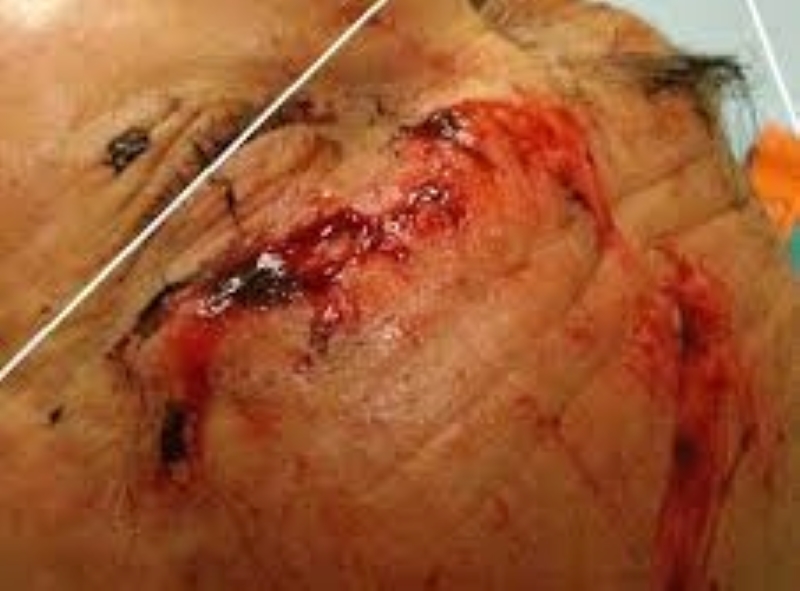
Caustication, electrocution, heat and radiation: the different types of burns
A burn is an injury to the integumentary tissues (skin and skin appendages) which can be caused by the action of:
- heat (thermal burns) from flames, red-hot metal bodies such as irons or stoves, hot liquids such as boiling water or frying oil, sunlight);
- chemicals (caustics) from muriatic acid, ammonia, caustic soda. They can be caused by over 25,000 types of substances, many of which are strong bases (55%) or strong acids (26%). Most deaths from chemical burns are due to ingestion of the caustic;
THE RADIO FOR RESCUERS IN THE WORLD? VISIT THE EMS RADIO BOOTH AT THE EMERGENCY EXPO
- electric current (electrocution) classified as arising from high voltage (greater than or equal to 1 000 volts), low voltage (less than 1 000 volts) or as secondary burns due to an electric arc; in children they are often caused by contact with electrical cables (60%) or electrical outlets (14%). Lightning can also cause burns, often extremely severe;
- Radiation: Radiation burns can be caused by prolonged exposure to ultraviolet rays (such as those from the sun, tanning booths, or welding processes) or ionizing radiation (such as from radiation therapy, x-rays, or fallout radioactive). Sun exposure, in particular, is the most common cause of superficial radiation burns.
Different types of burns, different methods of intervention
Burns can be of various entities according to the intensity of the temperature, the duration of the contact and the physical state of the burning substance (solid, liquid or gaseous).
The topic of burns is very complex, and must be treated from individual points of view, since the intervention of a rescuer, a nurse and a doctor are very different from each other.
We refer you to the in-depth articles to find the content that best suits your needs.
Read Also
Emergency Live Even More…Live: Download The New Free App Of Your Newspaper For IOS And Android
The 6 Phases Of The Clinical Course Of A Burn: Patient Management
How To Treat Skin Burn Victims With CPR And First Aid
Fires, Smoke Inhalation And Burns: Symptoms, Signs, Rule Of Nine
Calculating The Surface Area Of A Burn: The Rule Of 9 In Infants, Children And Adults
First Aid, Identifyng A Severe Burn
Chemical Burns: First Aid Treatment And Prevention Tips
Electrical Burn: First Aid Treatment And Prevention Tips
6 Facts About Burn Care That Trauma Nurses Should Know
Blast Injuries: How To Intervene On The Patient’s Trauma
What Should Be In A Paediatric First Aid Kit
Compensated, Decompensated And Irreversible Shock: What They Are And What They Determine
Burns, First Aid: How To Intervene, What To Do
First Aid, Treatment For Burns And Scalds
Wound Infections: What Causes Them, What Diseases They Are Associated With
Patrick Hardison, The Story Of A Transplanted Face On A Firefighter With Burns
Electric Shock First Aid And Treatment
Electrical Injuries: Electrocution Injuries
Emergency Burn Treatment: Rescuing A Burn Patient
Disaster Psychology: Meaning, Areas, Applications, Training
Medicine Of Major Emergencies And Disasters: Strategies, Logistics, Tools, Triage
Fires, Smoke Inhalation And Burns: Stages, Causes, Flash Over, Severity
Earthquake And Loss Of Control: Psychologist Explains The Psychological Risks Of An Earthquake
Civil Protection Mobile Column In Italy: What It Is And When It Is Activated
New York, Mount Sinai Researchers Publish Study On Liver Disease In World Trade Center Rescuers
PTSD: First responders find themselves into Daniel artworks
Firefighters, UK Study Confirms: Contaminants Increase The Likelihood Of Getting Cancer Fourfold
Cardiac Arrest: Why Is Airway Management Important During CPR?
5 Common Side Effects Of CPR And Complications Of Cardiopulmonary Resuscitation
All You Need To Know About Automated CPR Machine: Cardiopulmonary Resuscitator / Chest Compressor
European Resuscitation Council (ERC), The 2021 Guidelines: BLS – Basic Life Support
Paediatric Implantable Cardioverter Defibrillator (ICD): What Differences And Peculiarities?
Pediatric CPR: How To Perform CPR On Pediatric Patients?
Cardiac Abnormalities: The Inter-Atrial Defect
What Are Atrial Premature Complexes?
ABC Of CPR/BLS: Airway Breathing Circulation
What Is Heimlich Maneuver And How To Perform It Correctly?
First Aid: How To Do The Primary Survey (DR ABC)
How To Carry Out Primary Survey Using The DRABC In First Aid
What Should Be In A Paediatric First Aid Kit
Does The Recovery Position In First Aid Actually Work?
Supplemental Oxygen: Cylinders And Ventilation Supports In The USA
Heart Disease: What Is Cardiomyopathy?
Defibrillator Maintenance: What To Do To Comply
Defibrillators: What Is The Right Position For AED Pads?
When To Use The Defibrillator? Let’s Discover The Shockable Rhythms
Who Can Use The Defibrillator? Some Information For Citizens
Defibrillator Maintenance: AED And Functional Verification
Myocardial Infarction Symptoms: The Signs To Recognise A Heart Attack
What Is The Difference Between Pacemaker And Subcutaneous Defibrillator?
What Is An Implantable Defibrillator (ICD)?
What Is A Cardioverter? Implantable Defibrillator Overview
Paediatric Pacemaker: Functions And Peculiarities
Neonatal CPR: How To Perform Resuscitation On An Infant


